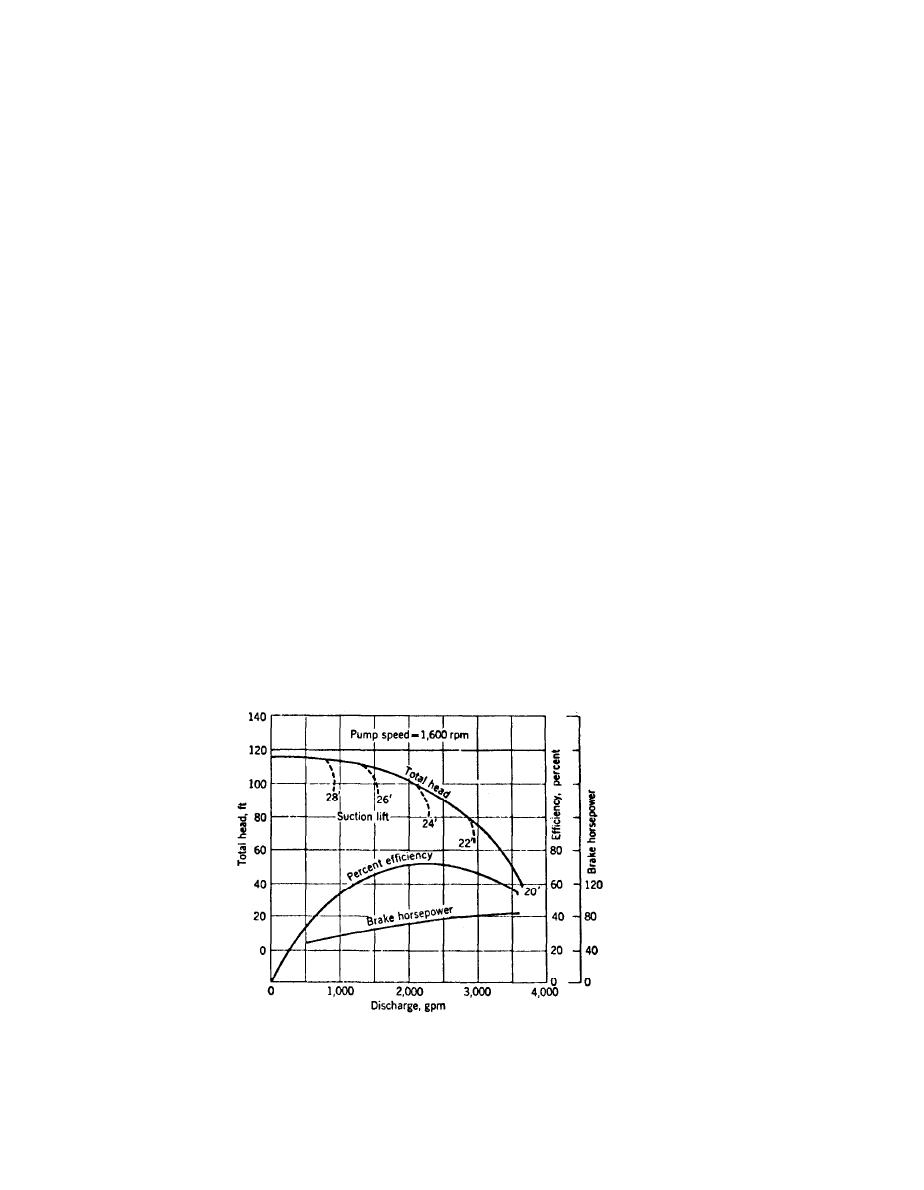
TM 5-818-5/AFM 88-5, Chap 6/NAVFAC P-418
d. Effective well radius. The "effective" radius rw of
crustation or mechanical wear caused by prolonged
a well is that well radius which would have no hy-
operation. This equipment should also be designed
draulic entrance loss Hw. If well entrance losses are
with appropriate valves, crossovers, and standby units
considered separately in the design of a well or system
so that the system can operate continuously, regard-
of wells, rw for a well or wellpoint without a filter may
less of interruption for routine maintenance or break-
be considered to be one-half the outside diameter of
down.
the well screens; where a filter has been placed around
a. Centrifugal and wellpoint pumps.
a wellpoint or well screen, rw may generally be con-
(1) Centrifugal pumps can be used as sump
sidered to be one-half the outside diameter or the
pumps, jet pumps, or in combination with an auxiliary
radius of the filter.
vacuum pump as a wellpoint pump. The selection of a
e. Well penetration. In a stratified aquifer, the ef-
pump and power unit depends on the discharge, suc-
fective well penetration usually differs from that com-
tion lift, hydraulic head losses, including velocity head
puted from the ratio of the length of well screen to to-
and discharge head, air-handling requirement, power
tal thickness of the aquifer. A method for determining
available, fuel economy, and durability of unit. A well-
the required length of well screen W to achieve an ef-
point pump, consisting of a self-priming centrifugal
fective penetration W in a stratified aquifer is given in
pump with an attached auxiliary vacuum pump,
appendix E.
should have adequate air-handling capacity and be
capable of producing a vacuum of at least 22 to 25 feet
f. Screen length, penetration, and diameter. The
of water in the headers. The suction lift of a wellpoint
length and penetration of the screen depends on the
pump is dependent on the vacuum available at the
thickness and stratification of the strata to be de-
pump bowl, and the required vacuum must be con-
watered (para 4-2a(6)). The length and diameter of the
sidered in determining the pumping capacity of the
screen and the area of perforations should be suffi-
pump. Characteristics of a typical 8-inch wellpoint
cient to permit the inflow of water without exceeding
pump are shown in figure 4-31. Characteristics of a
the entrance velocity given in b(2) above. The "wetted
typical wellpoint pump vacuum unit are shown in fig-
screen length hws" (or hw for each stratum to be de-
ure 4-32. Sump pumps of the centrifugal type should
watered) is equal to or greater than Qw/qc (para 4-2a(4)
be self-priming and capable of developing at least 20
and (6)). The diameter of the well screen should be at
feet of vacuum. Jet pumps are high head pumps; typ-
least 3 to 4 inches larger than the pump bowl or motor.
ical characteristics of a typical 6-inch jet pump are
4-7. Pumps, headers, and discharge
shown in figure 4-33.
pipes. The capacity of pumps and piping should al-
(2) Each wellpoint pump should be provided with
low for possible reduction in efficiency because of in-
one connected standby pump so as to ensure continuity
(Courtesy of Griffin Wellpoint Corp. and "Foundation Engineering,"
McGraw Hill Book Company)
Figure 4-31. Characteristics of 8-inch Griffin wellpoint pump.
4-36



 Previous Page
Previous Page
